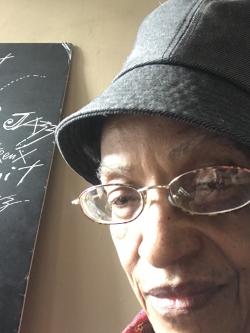English 002 - POS
Folder:
English For Poets .
THIS IS NOT HOW A TEXT BOOK EXPLAINS THE PARTS OF SPEECH. READ IT AND YOU WILL SEE WHAT I MEAN: Often the professionals try explain the parts of speech while putting so much information inside the definition that it is scary and too difficult to understand. The explanations and definitions are painfully accurate, but daunting.
.
In the simple text I am writing, I will take them one by one to make the terms easier to understand and become usable. The painful definition is less important than how to use the term or part of speech (POS).
.
SOURCE MATERIAL FROM GOOGLE:Credit to Butte College
THE EIGHT PARTS OF SPEECH
1. NOUN A noun is the name of a person, place, thing, or idea
credit to: Butte College
house... happiness A noun is a word for a person, place, thing, or idea. Nouns are often used with an article (the, a, an), but not always. Proper nouns always start with a capital letter; common nouns do not. Nouns can be singular or plural, concrete or abstract. Nouns show possession by adding 's. Nouns can function in different roles within a sentence; for example, a noun can be a subject, direct object, indirect object, subject complement, or object of a preposition.
.
The young girl brought me a very long letter from the teacher, and then she quickly disappeared. Oh my!
.
2. PRONOUN
- A pronoun is a word used in place of a noun.
She... we... they... it
A pronoun is a word used in place of a noun. A pronoun is usually substituted for a specific noun, which is called its antecedent. In the sentence above, the antecedent for the pronoun she is the girl. Pronouns are further defined by type: personal pronouns refer to specific persons or things; possessive pronouns indicate ownership; reflexive pronouns are used to emphasize another noun or pronoun; relative pronouns introduce a subordinate clause; and demonstrative pronouns identify, point to, or refer to nouns.
The young girl brought me a very long letter from the teacher, and then she quickly disappeared. Oh my!
See the TIP Sheet on "Pronouns" for further information.
3. VERB
- A verb expresses action or being.
jump... is... write... become
The verb in a sentence expresses action or being. There is a main verb and sometimes one or more helping verbs. ("She can sing." Sing is the main verb; can is the helping verb.) A verb must agree with its subject in number (both are singular or both are plural). Verbs also take different forms to express tense.
The young girl brought me a very long letter from the teacher, and then she quickly disappeared. Oh my!
See the TIP Sheet on "Verbs" for more information.
4. ADJECTIVE
- An adjective modifies or describes a noun or pronoun.
pretty... old... blue... smart
An adjective is a word used to modify or describe a noun or a pronoun. It usually answers the question of which one, what kind, or how many. (Articles [a, an, the] are usually classified as adjectives.)
The young girl brought me a very long letter from the teacher, and then she quickly disappeared. Oh my!
See the TIP Sheet on "Adjectives" for more information.
5. ADVERB
- An adverb modifies or describes a verb, an adjective, or another adverb.
gently... extremely... carefully... well
An adverb describes or modifies a verb, an adjective, or another adverb, but never a noun. It usually answers the questions of when, where, how, why, under what conditions, or to what degree. Adverbs often end in -ly.
The young girl brought me a very long letter from the teacher, and then she quickly disappeared. Oh my!
See the TIP Sheet on "Adverbs" for more information.
6. PREPOSITION
- A preposition is a word placed before a noun or pronoun to form a phrase modifying another word in the sentence.
by... with.... about... until
(by the tree, with our friends, about the book, until tomorrow)
A preposition is a word placed before a noun or pronoun to form a phrase modifying another word in the sentence. Therefore a preposition is always part of a prepositional phrase. The prepositional phrase almost always functions as an adjective or as an adverb. The following list includes the most common prepositions: of for into upon in at to beyond inside from
The young girl brought me a very long letter from the teacher, and then she quickly disappeared. Oh my!
Note: The prep and noun make no sense without who how the action and what. See the TIP Sheet on "Prepositions" for more information.
7. CONJUNCTION
- A conjunction joins words, phrases, or clauses.
and... but... or... while... because
A conjunction joins words, phrases, or clauses, and indicates the relationship between the elements joined. Coordinating conjunctions connect grammatically equal elements: and, but, or, nor, for, so, yet. Subordinating conjunctions connect clauses that are not equal: because, although, while, since, etc. There are other types of conjunctions as well.
The young girl brought me a very long letter from the teacher, and then she quickly disappeared. Oh my!
See the TIP Sheet on "Conjunctions" for more information.
8. INTERJECTION
- An interjection is a word used to express emotion.
Oh!... Wow!... Oops!
An interjection is a word used to express emotion. It is often followed by an exclamation point.
The young girl brought me a very long letter from the teacher, and then she quickly disappeared. Oh my!
.
HERE ENDETH THE
LESSON
Lady A
